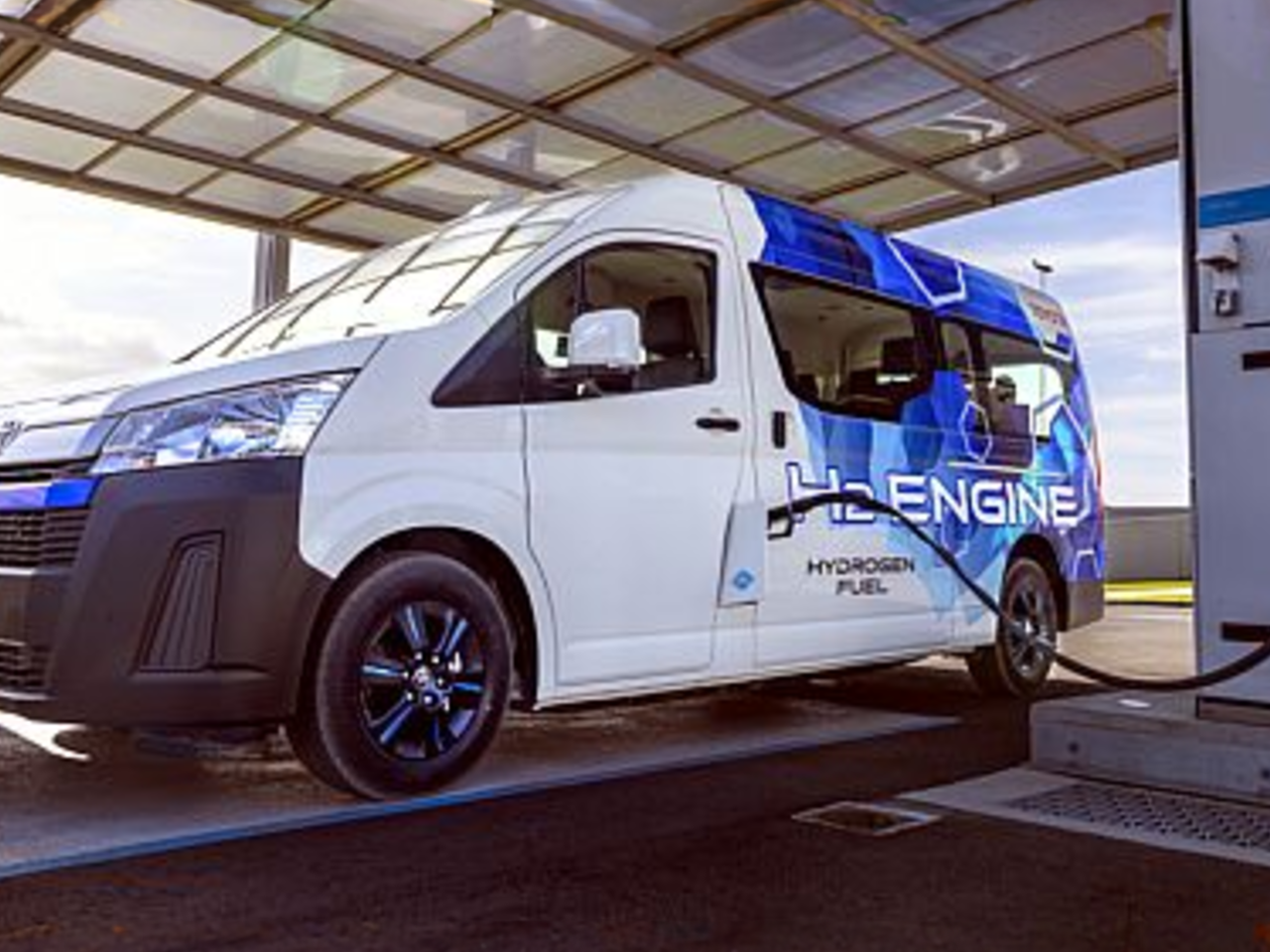Toyota Looks to Australian Market for Success of Hydrogen Internal Combustion Program
Will Toyota’s hydrogen internal combustion program revolutionize the Australian market? Only time will tell.
Toyota has officially launched its hydrogen internal combustion program in Australia, with the aim of gathering valuable feedback and data on the use of its HiAce Commuter H2 models. The Australian market will play a critical role in determining the program’s success, according to Toyota. The initiative is part of the company’s multipronged approach to vehicle decarbonisation. Several fleet operators will provide insights into the real-world use of the vehicles, contributing to the information already gathered by Toyota engineers in testing locations, including Australia’s hot red centre.
Toyota believes that the Australian market will serve as a crucial testing ground for its hydrogen internal combustion program. The company has officially launched the initiative in Australia, introducing a fleet of seven HiAce Commuter H2 models. These vehicles will provide valuable insights and feedback on their real-world use, helping Toyota gather crucial data and information.
Speaking at the program’s launch event in Altona, Victoria, Toyota Australia’s vice president of sales, marketing, and franchise operations, Sean Hanley, emphasized the importance of market feedback in determining the success of the program. He stated that the market will ultimately decide the outcome, and the launch of the HiAce Commuter H2 models provides Australian buyers with yet another alternative.
Hanley highlighted the benefits of hydrogen as a fuel source, stating that it offers advantages that battery electric vehicles (BEVs) currently cannot match. He acknowledged that while BEVs have a role to play, they may not be suitable for everyone. Toyota aims to offer a range of affordable alternatives that cater to different customer needs and preferences.
Ray Munday, Toyota Australia’s senior manager of vehicle evaluations and regulations, echoed Hanley’s sentiments, stating that Australia is an ideal location for the development of hydrogen-powered commercial vehicles. He explained that testing the HiAce Commuter H2 models in various environmental conditions across the country has allowed the company to evaluate their performance and capabilities.
In addition to vehicle development, Toyota is also focused on building the necessary infrastructure to support hydrogen-powered vehicles. The company recently signed a memorandum of understanding with Hyundai Motor Company Australia, Pacific Energy, and Ampol to co-develop a hydrogen refuelling network in the Australian Capital Territory (ACT). This partnership aims to establish refuelling stations for both H2-ICE and H2 FCEV vehicles in Canberra and beyond.
Toyota’s president and CEO in Australia, Matthew Callachor, emphasized the company’s commitment to the hydrogen economy. He highlighted Toyota’s previous hydrogen initiatives in the country, including trials of the Mirai FCEV sedan and the establishment of a hydrogen production facility in Victoria. The collaboration with Hyundai, Pacific Energy, and Ampol further expands Toyota’s involvement in this vital technology.
- Toyota’s hydrogen internal combustion program launches in Australia
- HiAce Commuter H2 models will be used to gather feedback and data
- Fleet operators will provide insights into real-world use
- The Australian market will determine the program’s success
- Toyota aims to offer affordable alternatives for Australians
Toyota’s hydrogen internal combustion program in Australia relies heavily on market feedback and real-world use of the HiAce Commuter H2 models. The company aims to provide affordable alternatives for Australian buyers and believes that hydrogen has advantages over battery electric vehicles in certain situations. Toyota is also focused on developing the necessary infrastructure, such as hydrogen refuelling stations, to support these vehicles. The collaboration with Hyundai, Pacific Energy, and Ampol is a significant step in expanding Toyota’s role in the hydrogen economy.

